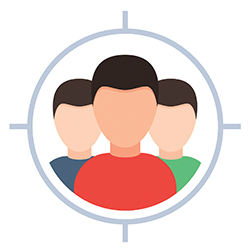How long can a healthcare concept be trendy before fully proving itself capable of making the leap into widespread implementation? We may be close to finding out in the case of today’s much-discussed, but still somewhat head-scratching, “patient centricity” focus.
In late 2014, contributor Zuzanna Fimińska wrote in an eyeforpharma post that, “[a]lthough it has become the industry’s catch-phrase, it is unlikely that all players are on the same page as to what it actually means to be patient centric.”
Fast forward to 2019: “[A]s with so many trends-turned-buzzwords, in spite of the popularity of patient centricity, there’s a distinct lack of clarity as to what it means,” wrote Natania Barron, director of global marketing for PSI in a recent post on BioPharma Dive.
Assuming that the term—in its most broad sense—refers to the process of designing a service or solution around the patient, when a June 5 webinar sponsored by VMS BioMarketing and hosted by PharmaVOICE put the spotlight squarely on patient centricity’s supposed promise for improving the efficiency of clinical trials, the message seemed to be that making trials better for patients makes trials better for researchers.
The presenters of the “Improving Clinical Trial Milestones and Reducing Site Burden with Clinical Trial Nurse Educators” webinar began by outlining familiar timeline, complexity, staffing, and fiscal challenges to running successful trials. A breakthrough way to address such challenges, according to presenters Kimberley M. Munn, RN, a clinical nurse educator, and Karen M. Josey, vice president for business development, both with VMS BioMarketing, is to aim clinical trial nurse educators (CTNEs) at much of a trial’s most patient-centric activities.
“Because the study teams are so busy…it makes it very difficult for the [team members] to focus on the patient experience,” said Josey. However, she explained, CTNEs can act as:
- educators offering consistency in training across sites;
- counselors who deeply understand the emotional needs of patients and caregivers;
- coaches who set clear expectations and create accountability;
- navigators who identify and link the patient and family to the right support and logistics at the right time; and
- translators of complex protocol and trial information.
Depending on a site’s needs, Josey said, CTNEs can come in the form of on-demand site visitors with national breadth; full-time educators with targeted depth (in particular indications, for instance); or clinician-staffed customer experience center workers delivering customized service (usually by telephone). It’s all about getting the patient interactions with researchers to flow more efficiently.
“Often we don’t take the time early on to help the patients fit the trial into their daily lives,” Josey said. “We engage too much in one-way communication…without circling back” to make sure the patients’ actual concerns are being addressed.
Patients may not have a good understanding of a trial’s expectations and requirements, become overwhelmed, and stop participating early when lack of communication between the trial stakeholders results in a poor patient experience, Munn said. “Knowing and understanding some of the barriers the patient faces is the start of [coming up with solutions]…and addressing fear of the unknown,” she added.
CTNEs can address many trial site challenges because “[t]hey are expert and trusted nurses who have the innate ability to empathize, understand the patients’ perspective, and work collaboratively in support of patients and ease trial burdens,” Munn explained. Further, as the clinical research enterprise becomes more and more reliant on technology, “compassion and the human touch are more important to treating patients,” she said.
“We know the clinical trial landscape has drastically changed with more demands on our sites…,” Josey said. “We can clearly see that the CTNE helps [study teams face] every barrier and unmet need for patients and trial sites.”
Author: Gary Cramer



